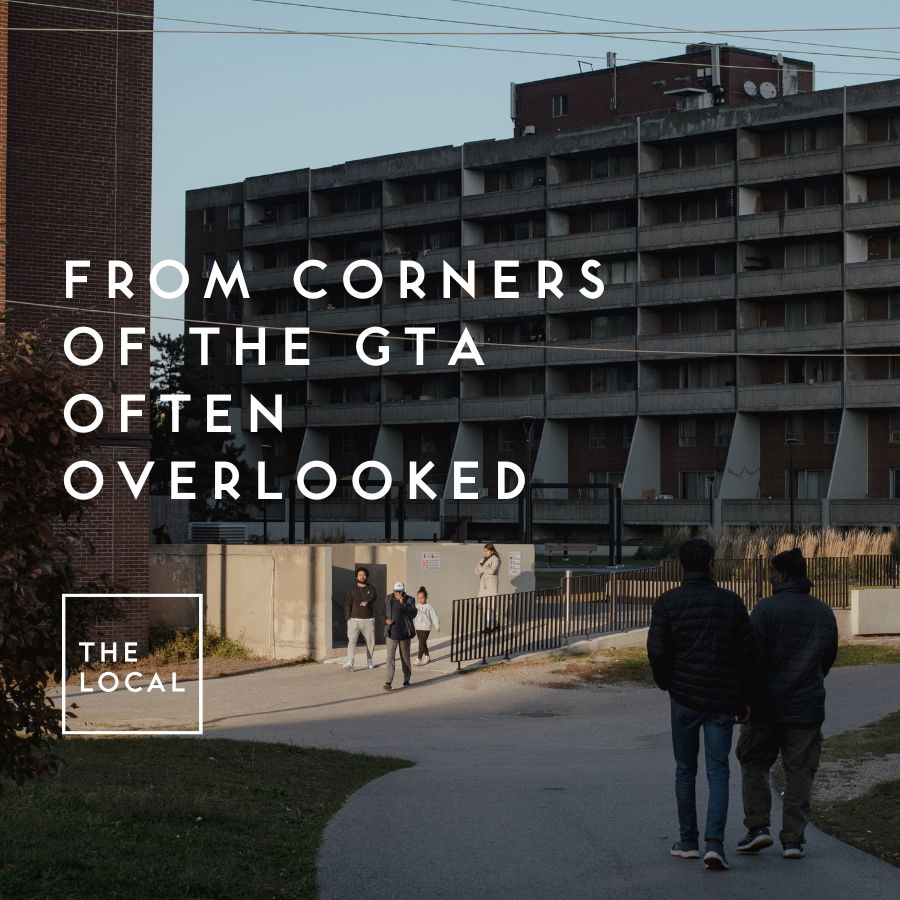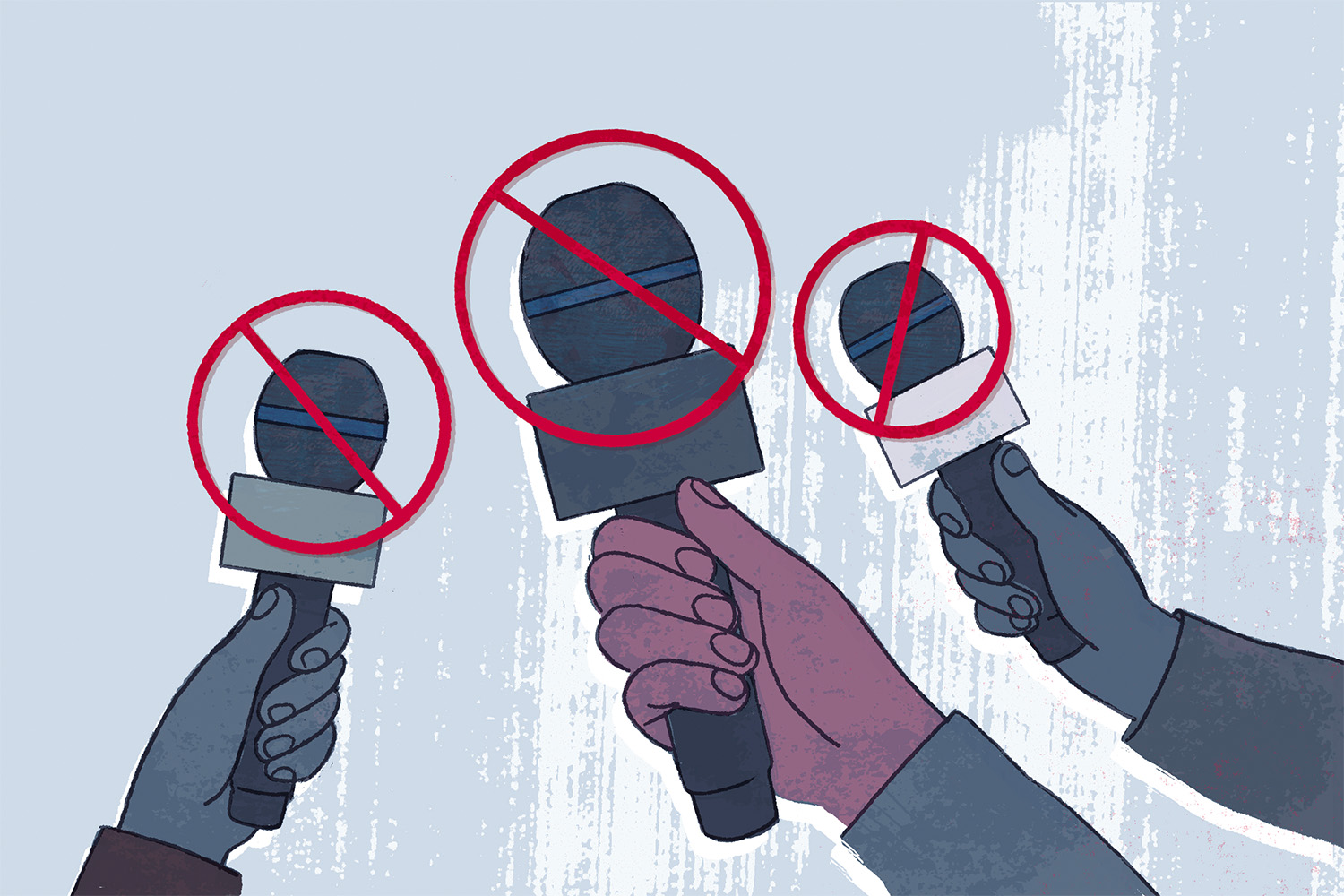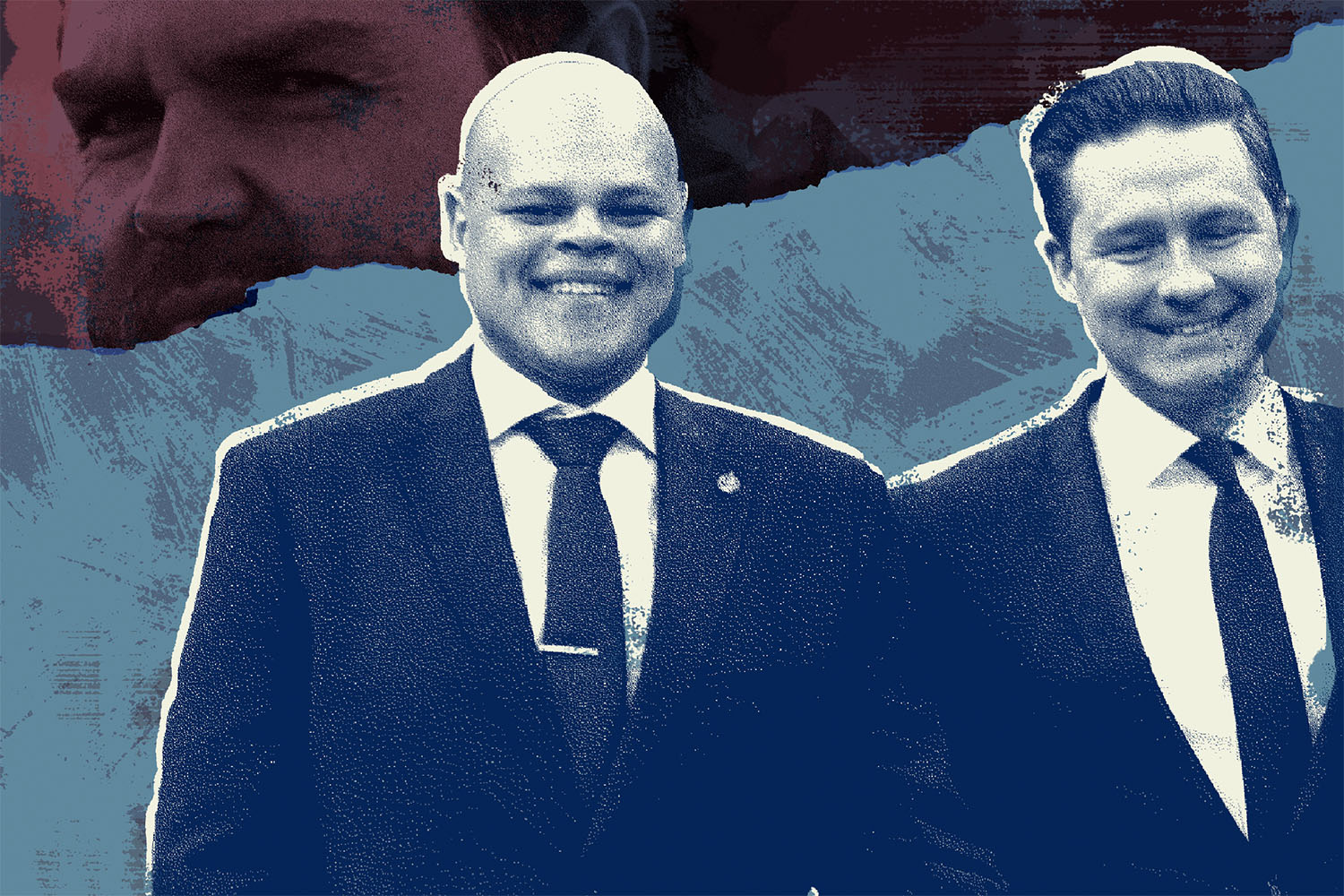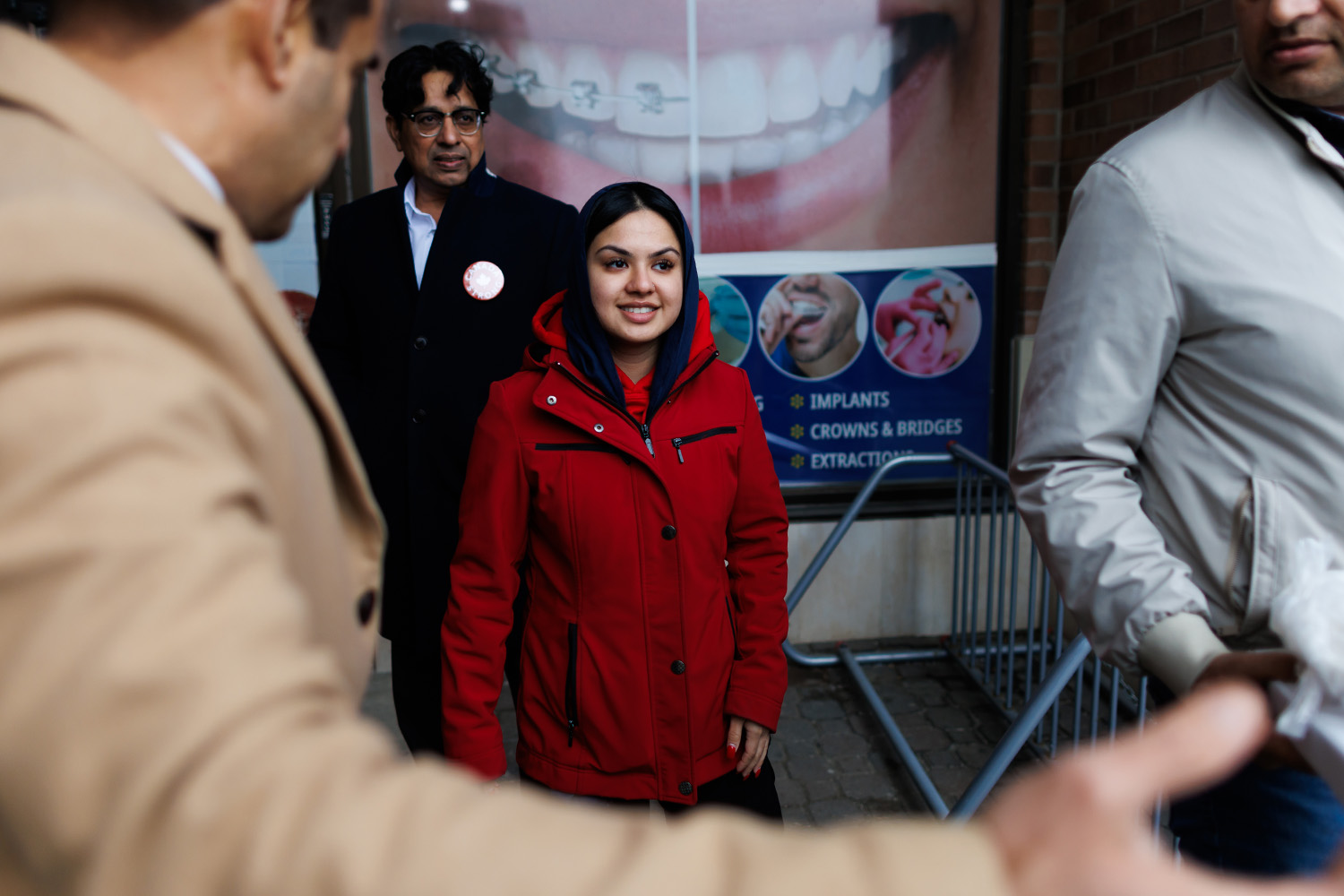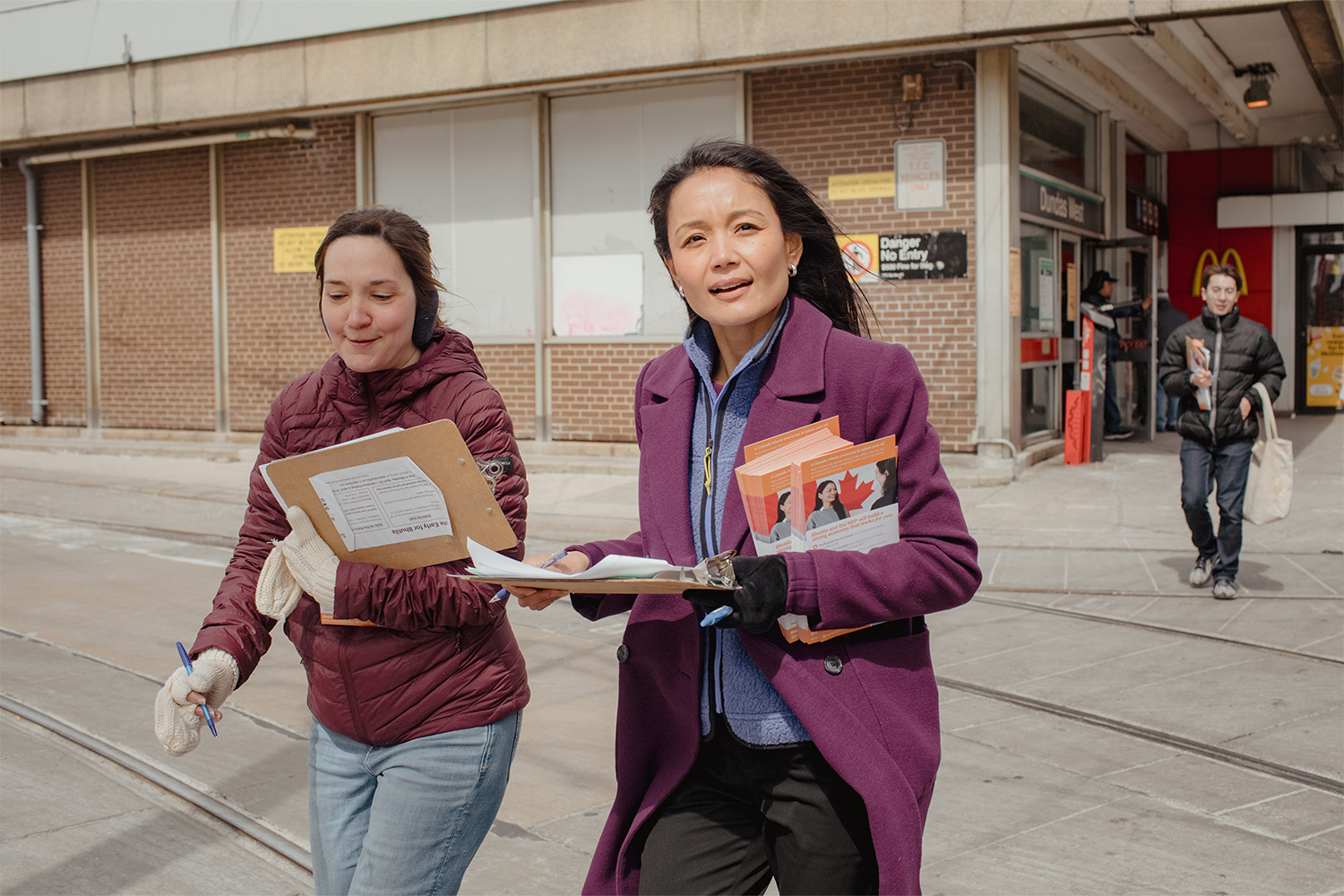On the steps of the Hindu Sabha Mandir, a massive temple with spires that interrupt the flat, suburban horizon of northeastern Brampton, a man named George is lamenting the half-century he spent supporting the Trudeau dynasty and the Liberal Party of Canada.
“Almost 50 years I’ve been supporting the Trudeaus. That was the biggest mistake I ever did,” he says. A clean-shaven man in his 70s, flat cap over his silver hair, he’s just emerged from the temple alongside a stream of attendees. His voice is cold as he tells me he previously volunteered for the Liberals. “I never knew that the snake was going to spread his venom.”
The snake, in George’s mind, is Justin Trudeau. The venom is the souring of diplomatic relations between Canada and India over the past year. Tensions between the two countries have been mounting for years, peaking in October 2024 when the Trudeau government expelled six Indian diplomats from Canada over evidence that Indian government agents were involved in the 2023 murder of a Canadian citizen involved in the Sikh separatist movement in northern India. (The Indian government denies the allegations.) Among some Hindus, and most supporters of right-wing Indian Prime Minister Narendra Modi, Trudeau’s actions in the years leading up to the expulsion of Indian diplomats have been seen as overly lenient toward Sikh separatists, and unduly punitive toward Indian officials. And to some of Modi’s supporters, an affront to the Indian Prime Minister is an affront to Hinduism itself. “The Liberal party in Canada, they are anti-Hindu,” George says, spitting the words. “Anti-Indian.”
The animus in George’s voice as he speaks of the party he’s supported most of his life isn’t representative of the average Hindu voter living in the Greater Toronto Area (GTA). But it is the most extreme consequence of a diplomatic collapse between the governments of India and Canada that matters to many in the Indian diaspora in Canada—particularly to Hindu Indians, and supporters of the Modi government.
Federal Election 2025
For in-depth election coverage from across the GTA, sign up for our free newsletter
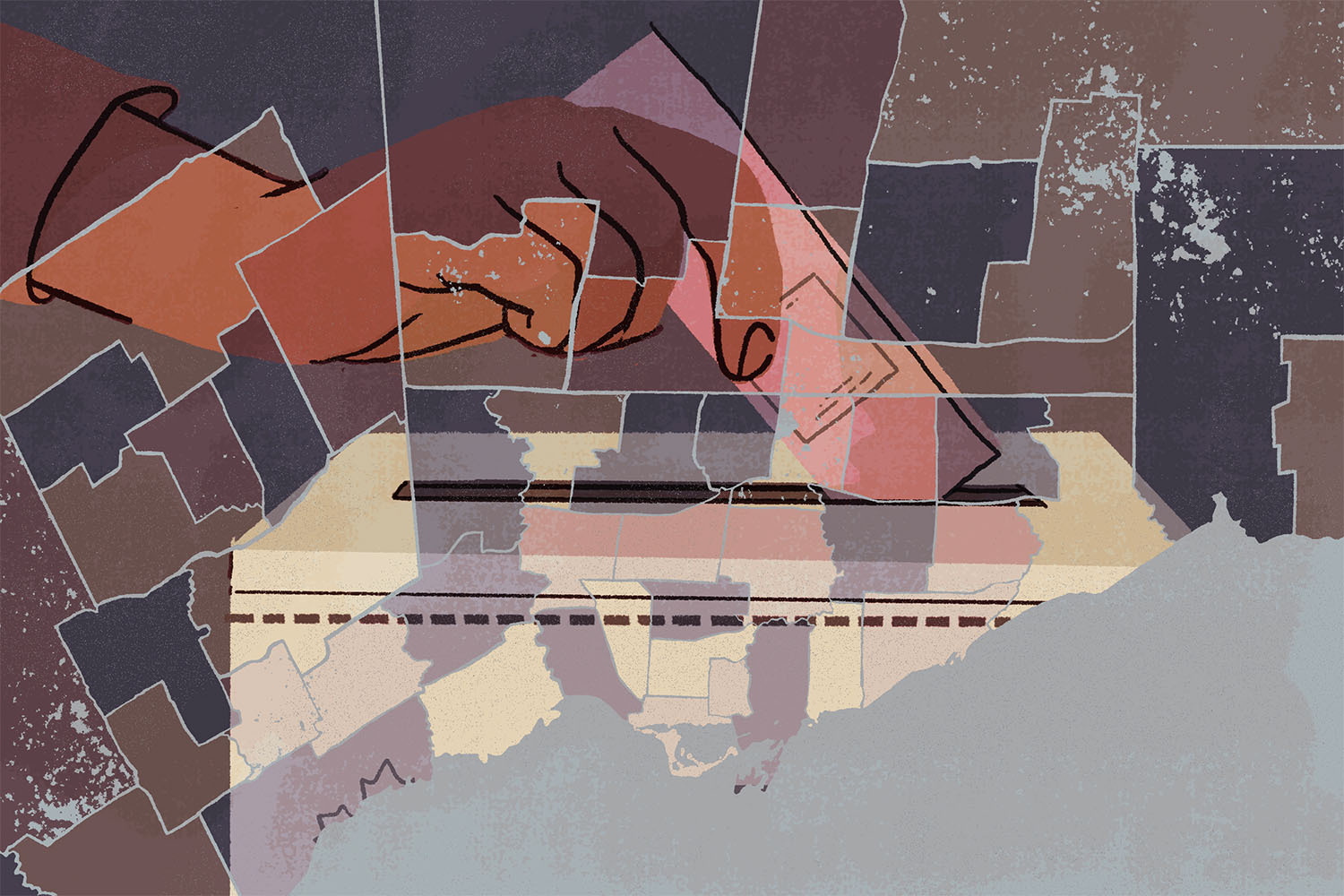
Last year, “there was a breaking-down of how Hindus probably saw the Liberal party,” says Shawn Binda, a Whitby-based Indo-Caribbean Hindu lifestyle YouTuber who has been part of efforts to get out the Hindu vote in the GTA. “There was a feeling that Trudeau needed to go, because of how he did not support the Hindu community in an outspoken manner.” An Angus Reid poll from spring 2024 found 53 percent of Hindu respondents would vote Conservative, with support for Trudeau plummeting. When diplomatic tensions last fall led to two days of violent clashes between Indian nationalist and pro-Khalistan (Sikh separatist) demonstrators in front of the Brampton Hindu Sabha temple, Peel Police issued a public safety alert and arrived at the scene clad in riot gear. The foreign relations debacle began to feel like an attack on the faith.
Among the dozen temple-goers I spoke with that Sunday in April, not far from the car park where the fighting took place, concerns ranged from pragmatic fears that the fallout will harm trade relations and immigration pathways between India and Canada, to frustration about a perceived Liberal permissiveness around rising “anti-Hindu” Sikh separatist sentiment, to an uncertainty about the big question: whether new Liberal leader Mark Carney will be able to repair the relationship between Canada and India.
Historically, immigrants in the GTA, including South Asians, have been understood to be a reliably Liberal voting bloc. But it’s 2025, and we know that immigrants aren’t a monolith. This moment of alienation between some Hindu voters and the national Liberal leadership has coincided with a visible, global shift to the right among parts of the Hindu Indian diaspora. Moving toward the Conservatives in the U.K., and towards the Republicans in the U.S., there are more Indian faces in western right-wing politics today than ever before. In Canada, and particularly in the GTA—the arcing swath of ridings in and around Toronto that’s home to half the country’s Indian diaspora—this moment has presented the Conservatives with a long-awaited opportunity to secure support among a voting base traditionally taken for granted as part of a Liberal stronghold.
Before they were a vital voter base for federal politicians, Indo-Canadians were, like many other Asian immigrant groups, a disenfranchised underclass and a policy problem. For most of the 20th century, the Indians who immigrated to Canada were working class. The first were Sikh men who arrived on the west coast to work, thankless and underpaid, in farming, lumber, mining, or bricklaying. Backlash to these new foreign workers—not dissimilar to today’s anti-Indian sentiment against international students and temporary foreign workers—prompted legislation making it virtually impossible for Indian immigrants to come to Canada. It was replaced with a quota in 1951, under which only 150 Indians were allowed into Canada every year.
It was only after the introduction of the points system in the late ‘60s that Indian immigration picked up. Boosted by a ‘90s-onward neoliberalization of the Indian economy, a professional class of doctors, engineers, academics, and middle-managers began to arrive—highly educated, fluent English speakers, who became enthusiastic participants in Canadian civic life.
“Look at demographic trends—it’s the future… Immigrants have the same values as us, we have to talk to them, to convince them.”
My family arrived from Mumbai in 2002 and settled into a two-bedroom apartment in central Mississauga. The city, which felt to me like a nondescript exurb of Toronto, was defined by its suitability for middle-class, nuclear families (though my single-parent household was a little different). The immigrants who moved there were working to secure what feels, in hindsight, like the last viable iteration of a particular Canadian dream.
For many of the immigrant residents of places like Mississauga and Brampton, as well as suburban Vancouver on the other side of the country, the Liberals were the party that had opened the doors to their arrival and made that dream possible. It was the elder Trudeau, after all, who had enshrined multiculturalism into Canadian law. The result was a reliable wave of red across these rapidly growing urban centres, clinching federal seats—and often the balance of power—for the Liberals from the ‘90s through to the late 2000s.
For right-wing politicians, the Liberal hold on immigrant voting blocs represented both a serious political impediment and an opportunity. “Look at demographic trends—it’s the future,” Quebec magazine L’actualité describes a young Jason Kenney, then-president of the Canadian Taxpayers Federation, telling Stephen Harper, then-rookie MP with the right-wing, populist Reform Party, in an Ottawa bar in 1996. “Immigrants have the same values as us, we have to talk to them, to convince them.”
In the face of what Carleton University political scientist Stephen White calls the “populist’s paradox”—the party’s need to maintain its position with a conservative base while also appealing to immigrant and minority voters—Harper’s Conservatives chose to diverge from their right-wing counterparts in the U.S., U.K., and Australia by aggressively courting the so-called “ethnic vote.”
By 2004, Harper was leader of the newly minted Conservative Party of Canada, and Kenney was on his way to becoming minister for multiculturalism. It wasn’t uncommon to see either of them visiting a Sikh gurdwara, hair covered in a traditional bandana out of respect, or garlanded and bowing to religious leaders at Hindu temples or celebrations.
In the 2004 federal election, the Conservatives ran more visible minority candidates than any other party. Two election cycles later, a leaked Conservative media strategy plan from 2011 revealed the party wanted to specifically target Chinese and South Asian voters in the GTA and in Vancouver, recognizing the importance of the regions for the election. “There are Lots of Ethnic Voters,” read the bullet-pointed memo. “There Will be Quite a Few More Soon and They Live Where We Need to Win.”
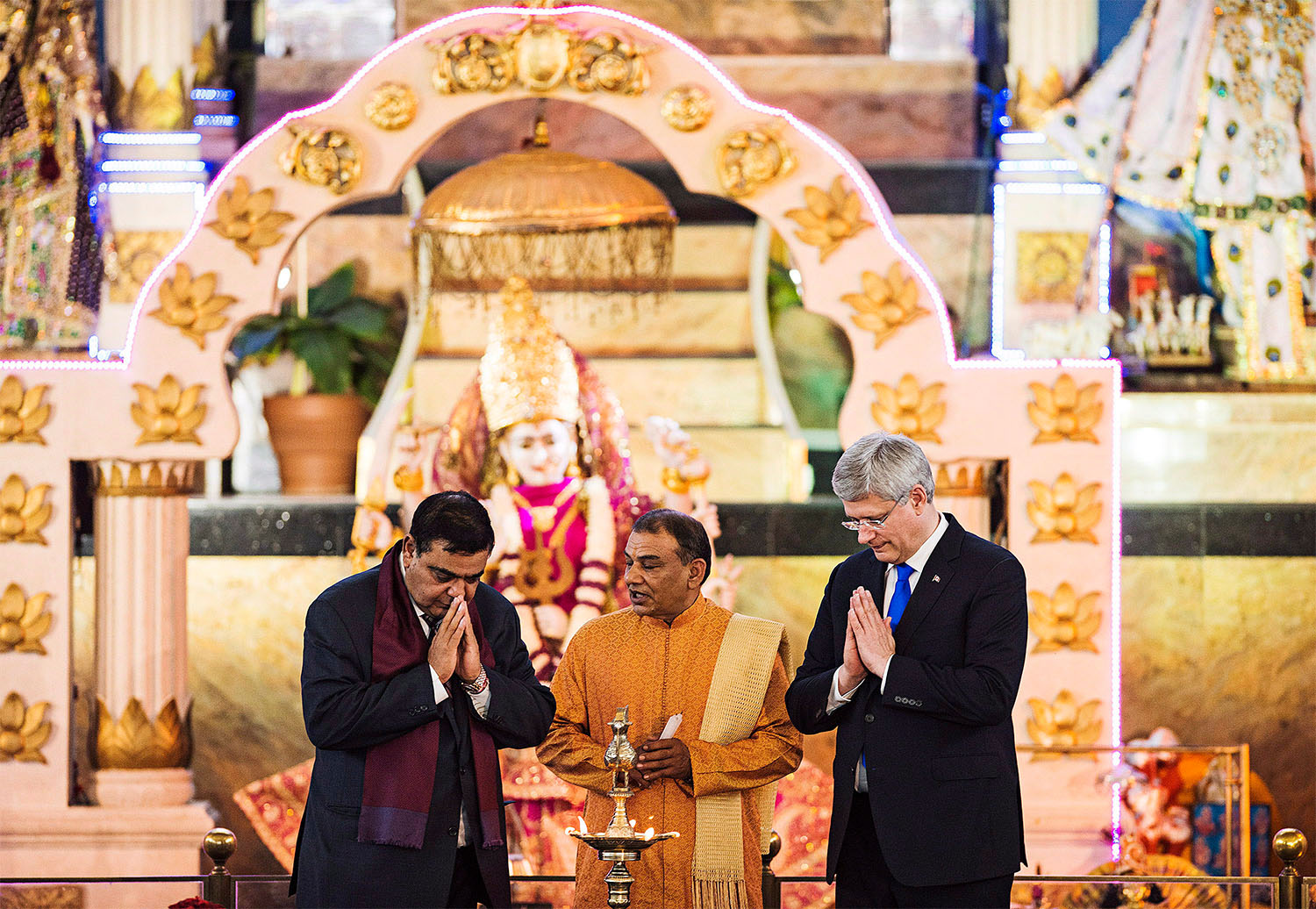
In their pursuit of the ethnic voter, Conservatives have always leaned into model minority, pull-yourself-up-by-the-bootstraps ideas that many immigrants—certainly many in the Indian community—have internalized, often to their own detriment and that of other minorities. Harper and Kenney extolled values like entrepreneurialism, market-based solutions to policy issues, a commitment to traditional family values, and a respect for law and order. They took pains to distinguish between those who came to Canada the “right” way, and “bogus,” “queue-jumping” claimants who broke the rules and got ahead.
My friends and I were too young to vote, but some of their parents were buying into it. In the 2011 election, the Greater Toronto and Hamilton Area went overwhelmingly blue, with Conservatives gaining 20 new seats in the region. Although racialized immigrants were still more likely to vote Liberal than their native-born counterparts, 10 of these new Conservative seats were in majority-immigrant ridings. Despite winning in 2015, the Liberals haven’t ever completely recovered their numbers in the region.
The Conservatives have never wavered from the idea that integration is the key to functional multiculturalism. But they’ve also been smart enough to know that what happens in the old country matters to much of the Indian diaspora.
In April 2015, Harper introduced newly elected Indian Prime Minister Narendra Modi at an event near the Toronto waterfront. Thousands lined up, in custom T-shirts, waving signs and flags, to give Modi the rockstar treatment. I had been blindsided by his victory the year prior, and by the support I saw for him among my ostensibly liberal Indian diaspora friends and classmates, and their parents. They were unfazed by his murky human rights record; by his leading a right-wing, Hindu nationalist party; by his failure as chief minister (India’s equivalent of a premier) to intervene in the 2002 sectarian riots that led to the deaths of more than a thousand people, mostly Muslims; by his supporters’ persecution of religious minorities in India.
The morning after the event, a then-close friend gleefully told me she knew people who had attended. My heart sank. My parents’ marriage had been interfaith, between Hindu and Muslim. I don’t know if she registered how that would shape my view of what was unfolding in India.
To write about the politics of the Indian diaspora, you have to acknowledge an uncomfortable, if perhaps obvious, truth. When it comes to political outreach to the Indo-Canadian community—made up, as India is, of people who are Hindu, Muslim, Sikh, Catholic, Jewish, and of many other faiths—religion matters.
“Usually, these categories are just sort of thrown around, of ‘South Asian voters’ or whatever. But Muslims, Hindus, and Sikhs are very different,” says Western University urban politics professor Zack Taylor, who has been studying immigrant voting patterns for more than a decade.
In original analysis of public polls between 2006 and 2024 conducted for The Local, Taylor found that compared to Protestants, a large, fairly neutral national sample group, Muslim voters have been more likely to vote Liberal than Conservative going as far back as 2006—in part due to Conservative messaging and policy that has been widely understood as Islamophobic. (The Harper administration’s “barbaric cultural practices” hotline and push to ban face coverings during citizenship ceremonies still haunts the party.)
Voting tendencies for Hindus, meanwhile, tended to fluctuate according to Taylor’s analysis. While Hindus have consistently been more likely to vote Liberal than Protestant voters, their support for the party has wavered, and they’ve shown a willingness to warm to the Conservatives.
Taylor indicates that more recent polling, in 2023 and 2024, suggests that Hindus are likely more friendly to Conservatives than ever before. However, due to small sample sizes, it’s difficult to draw definitive conclusions.
Taylor says the findings need to be seen for their big-picture trends, rather than their granular detail. The big picture: “[Historically], Liberals consistently hung onto Hindu support,” says Taylor. “But the Conservatives seem to start gaining on them.”
The same shifting allegiances and aggressive outreach campaigns we’ve seen take place in Canada have unfolded in the U.S. and U.K. with visible success. In the U.K., following reinvigorated Conservative outreach to British Indians, the community’s historically strong support for the Labour party dropped by 20 percent between 2010 and 2021. In the country’s 2024 general election, while the Conservatives lost favour among almost every demographic, they had the support of one in every three British Hindus.
Across the ocean that same year—dubbed the “year of newly minted Indian American GOP stars” by NBC—more Indo-Americans voted Republican than ever before. Support for Donald Trump in the community went from 22 percent to 31 percent between 2020 and 2024. In both countries, diaspora Indians became star players in right-wing politics, gaining prominence—or in some cases, notoriety—in a way no other minority ethnic group has.
In Canada, as in the U.K. and U.S., right-wing parties have been wooing Indian-origin voters on similar issues: taxation, family values and, perhaps surprisingly, the need to tighten immigration. With the spike in new immigrants from India arriving to Canada as temporary workers and international students, the Liberals have actually lost some Indo-Canadian voters. In early April, following a wave of visible and vitriolic anti-South Asian racism, the B.C.-based South Asian Society Against Discrimination put out a statement endorsing Pierre Poilievre and the Conservative party. The organization blamed Liberal policies bringing “international students with low-value degrees” who “struggle to integrate into the workforce,” leading to “an increase in discrimination against existing Indian-Canadians.” Poilievre’s flirtations with the far-right movement (including the Freedom Convoy), which has embodied the very anti-immigrant sentiment the Society Against Discrimination references, do not seem to faze the group.
When I attended the campaign launch for first-time Conservative candidate Jaspreet Sandhu, running in Mississauga-Malton, attendees listed off the failures of the Liberal party in addressing kitchen-table issues: affordability, jobs, housing. One campaign volunteer mentioned her disapproval of her son learning about LGBTQ+ issues at school, before a campaign handler rushed in to clarify her comments didn’t represent the views of the Conservative party. The Peel region’s rising crime rates—which are still the second-lowest of any major Canadian municipality—have reliably drawn suburban homeowners worried about car theft and break-ins to the party.
Local candidates, unsurprisingly, won’t touch the question of India-Canada relations with a barge pole. None of the Conservative candidates I asked to canvas with in Mississauga or Brampton were amenable to it (nor were some Liberal candidates); one Conservative campaign manager sheepishly mentioned that they’d been recommended not to speak on foreign affairs on the campaign trail.
But beneath the bread-and-butter domestic concerns, it’s evident that the tensions between governments, and between fringe members of the Hindu and Sikh communities, still simmer as salient political issues. Small, vocal Hindu advocacy groups have cropped up across the GTA and beyond, arguing that Hindus have historically been too passive in Canadian politics and need to advocate for themselves in the face of a Liberal government overly critical of Modi and overly lenient of Sikh separatist sentiment. The Canadian chapter of the Coalition of Hindus of North America’s (CoHNA) fears the “silencing” of Hindu-Canadian candidates for political office, including former MPs Chandra Arya and Ruby Dhalla. In fact, Arya was suspended over allegations of foreign interference from India and Dhalla disqualified from the leadership race over accusations of violating campaign finance rules. But “Hindu-phobia,” a pet talking point for CoHNA and other groups, has become the parry to seemingly any criticism of a Hindu individual in the public eye. And when framed as a genuine threat to the well-being of the Hindu Indian diaspora, it generates the sense that the community’s safest bet on election day is a politician who can address those concerns.
Local Journalism Matters.
We're able to produce impactful, award-winning journalism thanks to the generous support of readers. By supporting The Local, you're contributing to a new kind of journalism—in-depth, non-profit, from corners of Toronto too often overlooked.
SupportThe Canadian Hindu Volunteers, a community network, told The Local that they weren’t endorsing a candidate or party this election, only to retweet—alongside a stream of content critical of Islam—posts urging Canadians not to vote Liberal. The National Alliance of Indo-Canadians put out an election endorsement for “any candidate” who pledged 15 bullet points. The third point was a denunciation of Khalistani extremism. Further down the list were talking points that could have been taken straight from the Conservative party’s platform: cutting red tape and taxation, denouncing “woke and cancel culture,” protecting children from inclusion policies that “sexualize and confuse.”
Poilievre seems to be paying attention. Long before the election was called, in fall 2023, the Conservatives were notably absent from an emergency debate on foreign interference and the ties between the Indian government and the killing of Sikh separatist Hardeep Singh Nijjar. When the accused diplomats were expelled last fall, Poilievre seemed to spend as much time, if not more, demanding transparency from Trudeau and criticizing the sitting government as he did condemning the allegations of foreign violence against a Canadian citizen. “[He] seems to reflexively side with Narendra Modi’s government rather than our own,” National Observer columnist Max Fawcett wrote at the time.
Poilievre had already been hounded by allegations that the Indian government had attempted to interfere in the 2022 Conservative leadership race in Poilievre’s favour, though the interference is not believed to have influenced the outcome of the race, nor been done with Poilievre’s knowledge. What it looked like, from the outside, was a savvy politician recognizing the strong voter base that Hindus—now seven percent of the GTA population—could represent, and doing everything possible to avoid alienating those in the community sensitive to criticisms of the Indian government.
Poilievre’s careful maneuvering has won him favour in the Indian press. He was praised on everything from his willingness to push for direct Punjab-Canada flights (the lack of which he somehow managed to blame on the Liberals), to his promise to restore ties with India as Prime Minister. His condemnation of attacks against Hindu temples was celebrated, while Trudeau’s leadership was lambasted as overly lenient to Sikh separatism. (Trudeau has repeatedly disavowed any violence or hatred and reiterated that the Khalistan movement does not represent Sikhs as a whole.)
Under Modi, press freedom in India has been systemically eroded, with the country slipping to 159 out of 180 countries on the World Press Freedom Index. And over and over, Indian news outlets of varying reputations for reliability have platformed Canadians who describe the Conservatives as the solution to India-Canada tensions, and describe the Indian diaspora as unilaterally opposed to Trudeau. “The Indian Canadian community is in favour of [Trudeau’s] resignation,” prominent Indian news channel NDTV quoted an Indo-Canadian tech worker living in Toronto as saying. “Trudeau a laughing stock in India,” read another headline quoting Poilievre.
This is how sentiment turns in a community. Families, friends, neighbours talk to each other, share news articles and WhatsApp forwards of dubious accuracy. It’s not uncommon for members of the diaspora, especially older people, to still access Indian news sources, says Mathew Edassery, a social worker-turned-activist who moved to Canada eight years ago and now works with the advocacy group Canadians for Indian Democracy. Five or 10 years ago, it might’ve been misinformation shared through social media. Now, it’s an unapologetic bias, available 24/7 on any television a world away from India in Mississauga. If you want to check in on what’s happening back in your home country, or prefer watching the news in your first language, this might be the only media diet you’re getting. “That’s the constant propaganda supply,” Edassery says.

Next Monday, when the returns start coming in for what has continuously been described as the most consequential election in a generation, all eyes will once again go to the voter-rich ridings surrounding Toronto. Twenty years after those initial days of outreach by the Conservatives, there’s a different face leading the party name. But the immigrant-dense, diverse region where I grew up is no less vital to clinching the election.
It’s clear Poilievre and the Conservatives are favoured by right-wing Hindus who believe the threat of Sikh separatism to be the greatest issue facing the Hindu Indian diaspora in Canada. They will win among those who align themselves with the right on most other social issues, regardless of how strange a bedfellow each is to the other. But I’m thinking more about the friend I had in high school who told me, to my dawning horror, about her family attending the Modi-Harper rally. I’m thinking of the classmate who turned to me the day after Modi was elected, starry-eyed and likely parroting what he’d heard his parents say at home, and told me how great it was that Modi had been elected.
The measure of success for Conservative inroads to the GTA will be what direction that demographic of voters—primed by years of wooing from Conservatives, by their strong ties to India and to Modi, by a deep internalization of model minority myth, and by all the kitchen-table issues the Liberals have failed to deliver on over the years—chooses to go this election.
During the April 17 English-language debate, in response to a question about Israel’s war on Gaza, Poilievre said, “We need to get back to the Canadian tradition, which is that when people come to this country, they leave foreign conflicts behind.” NDP leader Jagmeet Singh cut in. “People come from countries from around the world and they care deeply about where they come from…That’s a part of being in our country, to have that freedom.”
Poilievre didn’t need Singh to tell him this. His every careful step in navigating the complicated relationship between Canada, India, and diaspora voters suggests he understands that when immigrants arrive, they don’t just leave their values, their politics, even their prejudices, at customs. Two days after the debate, he visited constituents at the BAPS Mandir in northwest Toronto, a sprawling temple complex off Finch Avenue and Humberline Drive, where Carney had been greeted and garlanded earlier that month. In the atrium, Poilievre was met by smiling women in saris and salwars, eager to shake his hand. Above him, sunlight filtered through a breathtaking, intricately carved wooden facade, designed to make you feel, for a moment, like India isn’t a world away.
The Local’s Federal Election 2025 coverage is supported in part by our readers and by the Covering Canada: Election 2025 Fund.
